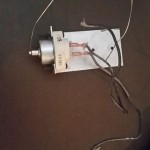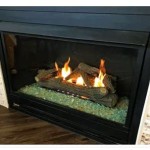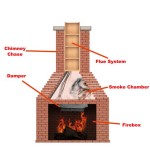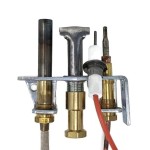The Importance of a Clean Fireplace Gas Line
A fireplace provides warmth, ambiance, and a focal point for a home. Whether it's a traditional wood-burning fireplace or a more modern gas-powered unit, proper maintenance is crucial for safety and optimal performance. While many homeowners remember to clean the firebox or inspect the chimney, the gas line is frequently overlooked. This component is responsible for delivering fuel to the fireplace, and its condition directly impacts the efficiency and safety of the appliance. Regular inspection and cleaning of the gas line are essential to ensure its integrity and prevent potential hazards.
The gas line is a relatively simple system, consisting of a pipe that carries natural gas or propane from the main supply to the fireplace burner. It typically includes a shut-off valve, which is used to isolate the gas supply for maintenance or emergencies. However, over time, several issues can compromise the gas line’s functionality. These issues can range from minor inconveniences like reduced flame height to serious safety hazards such as gas leaks.
Why Clean a Fireplace Gas Line?
The primary reason to clean a fireplace gas line is to ensure proper gas flow. Debris, scale, and other contaminants can accumulate inside the line, restricting the flow of gas to the burner. This can lead to a weak or uneven flame, reduced heat output, and potentially incomplete combustion. Incomplete combustion not only reduces the fireplace's efficiency but also increases the risk of carbon monoxide production.
Another critical reason to maintain a clean gas line is safety. Gas leaks, even small ones, are a significant fire and explosion hazard. Corrosion or damage to the gas line can lead to leaks that are difficult to detect. Regular inspection and cleaning can help identify potential problems before they escalate into dangerous situations. Furthermore, a clean gas line contributes to the overall lifespan of the fireplace components, preventing premature wear and tear on the burner and other associated parts.
A clean gas line also promotes better air quality within the home. When the gas line is obstructed, the fireplace may not burn fuel efficiently, resulting in higher levels of pollutants being released into the living space. Regular cleaning helps to ensure complete combustion, minimizing the emission of harmful substances and promoting a healthier indoor environment.
Signs Indicating a Need for Gas Line Cleaning
Several indicators suggest that a fireplace gas line requires cleaning. A noticeable reduction in flame height is a common symptom. If the flame appears significantly weaker or shorter than usual, it could be a sign of restricted gas flow due to debris in the line. Similarly, an uneven or flickering flame can indicate inconsistent gas supply, potentially caused by obstructions or pressure fluctuations.
An unusual odor, particularly the smell of gas, is a serious warning sign that should be addressed immediately. Even a faint gas odor requires prompt investigation, as it could indicate a leak in the gas line or connections. Another indication is difficulty starting the fireplace. If the pilot light is difficult to ignite or the main burner struggles to start consistently, the gas line may be partially blocked.
Visual inspection can also reveal potential problems. Examine the gas line for signs of corrosion, rust, or physical damage. Check the connections for leaks by applying a soapy water solution and looking for bubbles. Any of these findings warrant immediate attention and professional evaluation.
How to Clean a Fireplace Gas Line
Cleaning a fireplace gas line involves several steps and requires caution. Due to the inherent risks associated with working with gas lines, it is generally recommended that this task be performed by a qualified professional. However, understanding the process can provide homeowners with valuable insight into proper fireplace maintenance.
The first step is to shut off the gas supply to the fireplace. Locate the gas shut-off valve, typically located near the fireplace or at the main gas meter, and turn it to the "off" position. Next, disconnect the gas line from the fireplace burner. This may involve unscrewing fittings or removing couplings. Before proceeding, it's important to exercise caution and ensure that no open flames or ignition sources are present in the vicinity.
Once the gas line is disconnected, it can be cleaned using compressed air or a specialized cleaning solution. Compressed air can be used to blow out any loose debris or scale inside the line. Alternatively, a gas line cleaning solution can be used to dissolve stubborn deposits. After cleaning, flush the gas line with clean water or compressed air to remove any residual cleaning solution.
Before reconnecting the gas line, inspect all fittings and connections for damage or wear. Replace any worn or damaged components to ensure a secure and leak-free connection. When reconnecting the gas line, use pipe sealant or Teflon tape to create a tight seal on all threaded connections.
Finally, test the gas line for leaks by applying a soapy water solution to all connections. If bubbles appear, it indicates a leak that needs to be addressed immediately. If no leaks are detected, turn the gas supply back on and test the fireplace to ensure that it is functioning properly. If any issues persist, consult a qualified gas appliance technician.

Log Lighter Maintenance 7 Easy Steps

How To Clean A Gas Fireplace Diy Family Handyman

How To Clean A Gas Log Fireplace Ina Comfort Air

Lp Gas Line Clearance Plumbing Inspections Internachi Forum

How To Clean Soot From A Gas Log Set Full Service Chimney

How To Fix A Blocked Gas Fireplace

The Ultimate Guide To Cleaning Your Gas Fireplace R T Services

How To Clean A Gas Fireplace 11 Steps With S Wikihow

How To Clean A Gas Fireplace The Proper Way

Reasons Your Gas Fireplace Isn T Working Experts
Related Posts








